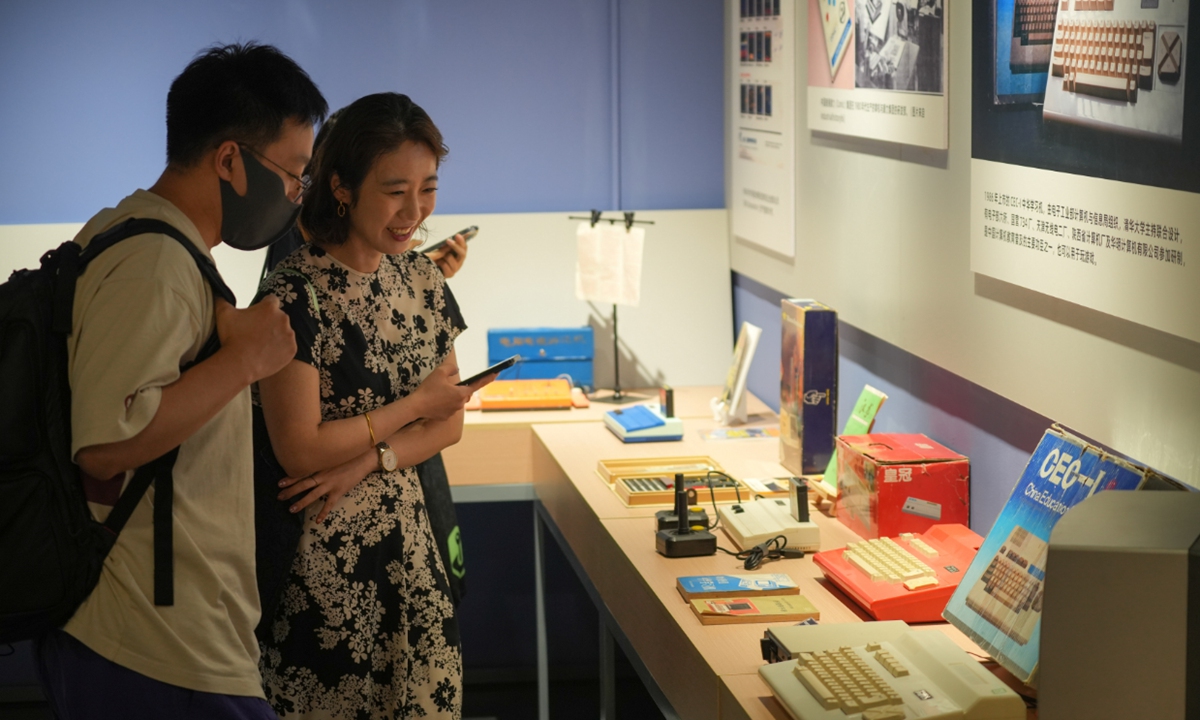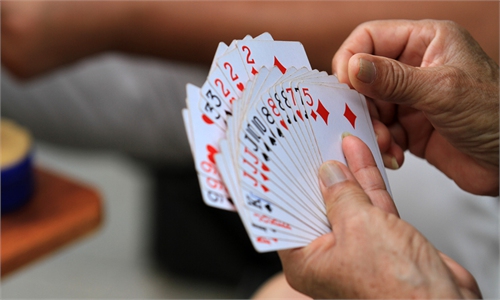
Visitors talk about an exhibit on display at the Video Game Museum of CADPA on July 25, 2024. Photo: Lu Ting/GT
This summer brings another piece of good news for China's video game enthusiasts, as the country's first professional video game museum opened in Shanghai on Thursday.
Covering an area of 2,000 square meters in Shanghai's downtown Xuhui district, the Video Game Museum of CADPA (China Audio-Video and Digital Publishing Association) aims to be a new platform for communication between Chinese and overseas video game lovers and industry insiders, said Ao Ran executive vice chairman and secretary general of the CADPA.
"We expect the museum to be a bridge between the game industry and the public, providing visitors with a rich cultural experience and deep thinking, and also promoting the continuous progress and cultural exchanges in the game industry," Ao told the Global Times at the museum's opening ceremony on Thursday.
At the museum's 1,000-square meter permanent exhibition area on Thursday, more than 1,000 exhibits were on display across four major sections, which respectively introduce the early situation of electronic games, the blossoming of console games, the development of computer games, and the chronicle of Chinese video games.
The first section covers the world's major game platforms from the 1970s and 1980s, including early arcade machines, home consoles, handheld devices, and the then growing popularity of home computer games. Visitors exploring this section will learn about the origins of electronic games through vivid exhibits, such as the currently rarely seen Pong, a video game console released in North America in the mid-1970s.
The second section of console games may be a highlight for Millennial visitors, as milestone products from renowned console manufacturers, such as Nintendo, Sega, Sony and Microsoft, will take them back to the carefree teenage years filled with The Legend of Zelda and Super Mario Bros.
The third section presents the progress trajectory of early computer game software, as well as the iterations of hardware technology. Graphics cards, mouses, keyboards, gamepads... exhibits of various ages are examples of the global development trends of the game industry over the decades.
The fourth section, or the Chinese games section, showcases a lot of precious physical collections to trace the stages of the country's game industry from budding, growth, prosperity, and its path toward internationalization.
This section will bring Chinese visitors some nostalgic feeling, as many of the exhibits, including the The Legend of Sword and Fairy series, were once household names across China. Some recent mobile phone games, such as Honkai: Star Rail and Zenless Zone Zero from Chinese games giant MiHoYo, are showcased as well.
Instead of focusing solely on the video game histories of the US and Japan, the museum offers wider insights into the development of games across various regions worldwide, and particularly offers a vivid portrayal of China's game history. Ao said the Chinese games section was specifically designed in order to enhance Chinese visitors' cultural identity and pride, fostering a sense of cultural confidence.
"Video games have become a global cultural phenomenon, and a bridge connecting people from different countries, ethnicities, and languages," Ao noted.
"I hope this museum can serve as a beacon that guides the Chinese game industry to shine brighter on the world stage, when China's video games going global is gradually becoming the norm," he said.




